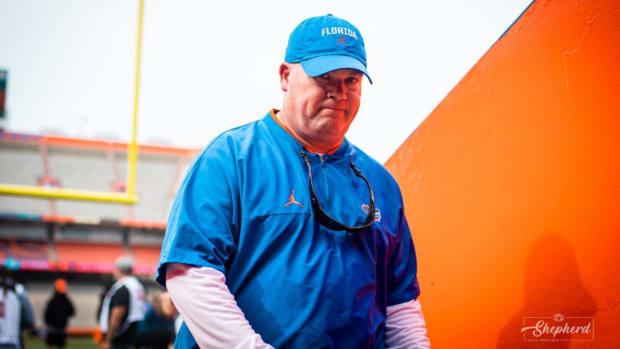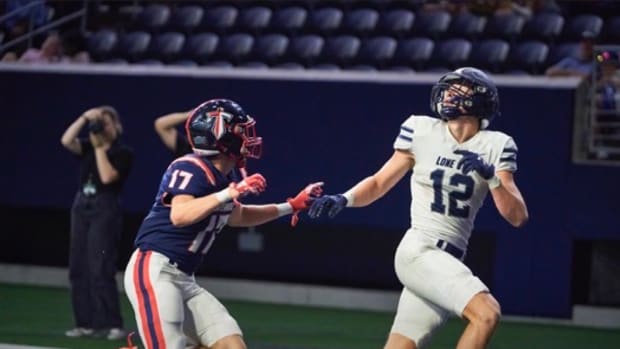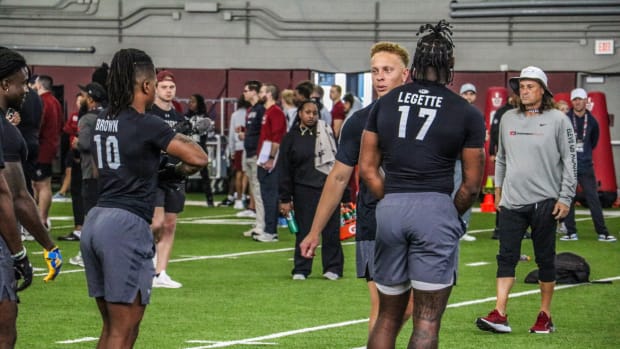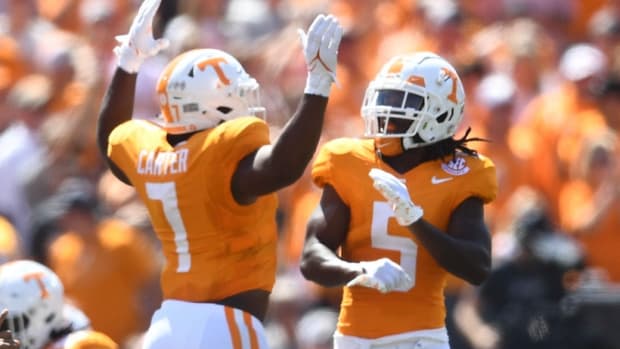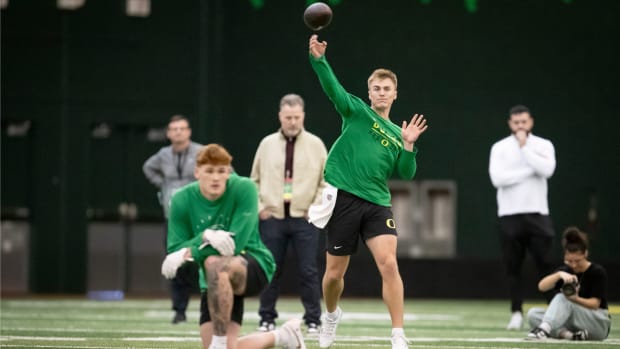What It's Like to Work Out With Oregon Strength Coach Aaron Feld
EUGENE, Ore. — Aaron Feld is trying to be nice while still making a point.
“You’re strong enough,” the Oregon strength coach says.
I’ve just finished a superset that starts with a back squat (with a resistance band around my waist and tethered about five feet behind me). At the top of each squat, I am commanded to squeeze my butt cheeks together to train my body to generate extra force. When I finish the squats, I must move to the next station and strap my arms into a set of elastic bands. Each tricep rests on a band, and I reach to grab near the top of each band with each hand. My job now is to sink into a squat and then explode up. The bands will help slingshot me up and then help manage my descent.
After several pitiful hops, Feld diagnoses the same issue that ensured I’d never rise above the level of living tackling dummy as a Division I football player. “You have the strength of someone who is capable of lifting this,” Feld says, pointing to a bar holding 275 pounds. “Right now, your body is not capable of producing force fast enough.” You can barely slide a piece of paper between my feet and the ground when I jump. Feld, who played long snapper at Mississippi State, can put his arms in those bands and blast off the ground. When the best of his players do it, they look as if they’re flying. This is how Feld hopes all the Ducks will look when they’ve been in his program for two full years. He wants them strong enough to withstand the rigors of the schedule, but he also wants them explosive enough to dominate equally strong players. I’m a perfect example. Nearly anyone can learn to lift enough mass. But Feld is more interested in force, which you’ll remember from high school physics is the product of mass times acceleration. The difference between average teams and championship teams usually is the a in F = ma, not the m.
As part of the research for my story into the new generation of strength coaches, Feld agreed to show me some of the lifts his players do on a regular basis. If you’re looking for massive, bar-bending numbers, look elsewhere. The Ducks lift heavy, too—Sundays after games feature some heavy squats—but every lift is designed for a specific purpose. And that purpose is never to win a gold medal in weightlifting. “We’re not training for powerlifting,” Feld says. “We’re training for football. How does blowing your elbow out or blowing your pec out or blowing your hip out help you become a better football player?”
In December, Feld posted video of one of Oregon’s Flex Friday workouts that showed several Ducks curling empty 45-pound Olympic bars.
An Oregon State fan cracked in a since-deleted tweet that the Beavers were lifting real weights. While Oregon fans jumped into the thread to remind their rival that the Ducks beat Oregon State 55–15 in November, Feld had a request for the fan.
As of this writing, no fat grip reverse curl video was sent in response.
Feld cares about the m and the a, which is why some lifts mix both in ways that didn’t seem possible back in the stone ages of strength training. For example, 20 years ago not many people would have been willing to put 315 pounds on their back and jump. Feld does this to demonstrate the system of bands he’s devised to wrap around the bar and help distribute the weight to make the lift safe. “I could never do this without this band,” Feld says. “But when I first land, it’s almost 315 pounds. So it’s actually absorbing that force for a split second.” Most of Feld’s players aren’t ready to do that kind of weight yet. The bigger ones will be soon, though. He starts me at 225 pounds and offers a warning. “Whatever you do,” he says, “do not let your hips come forward.” I promise on video that I won’t sue if I maim myself. But there’s no need to worry. After I jump, the weight doesn’t crash down on my back. I can feel my legs absorbing the force, but my back feels no different than if I had just done a regular squat. Feld then explains that the landing portion of the lift is called the “amortization phase.” I tell him I first heard that word in Intro to Accounting, and he explains that the strength training definition isn’t that different from the accounting definition. Something is diminishing over time, and in this case it’s the amount of force your legs are required to absorb. The band is taking it away quickly after the initial shock of the landing.
A few hours later, it will become abundantly clear that my entire lower body did a lot more work than I initially thought. Parts that hadn’t been worked in decades screamed to protest the neglect. If I kept working with Feld, I might be able to boost my a, which would in turn boost my F. In one of his favorite analogies, I’m still this guy.
I need to keep working so I can be a brick wall like the Ducks’ linemen will be soon.
“If you’re one of the dudes outside the tire store and they hit you, it’s over,” Feld says. “They’ll tear right through you. But if you’re the concrete wall and they hit you, they’ll crumble. And that starts from the inside out.”
